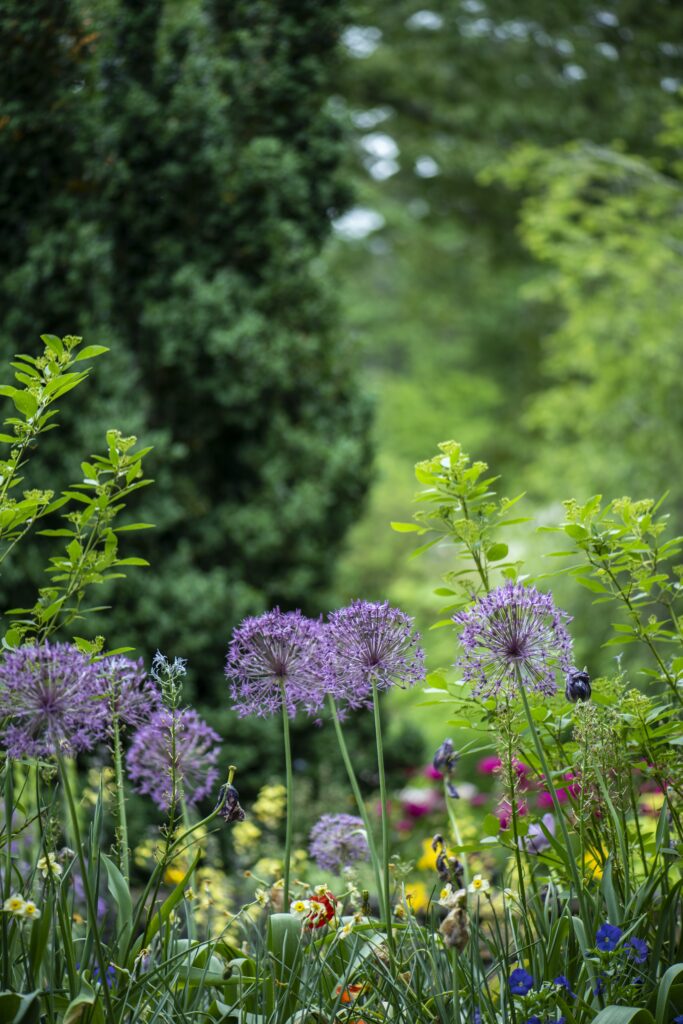Immerse yourself in the beauty and tranquility of Japanese gardens with these essential maintenance tips. Whether you’re a proud owner or a dedicated gardener, maintaining the splendor of a Japanese garden is key to preserving its timeless allure. From properly pruning trees to maintaining the harmony of the garden’s elements, this article will guide you through the necessary steps to ensure your Japanese garden remains a haven of serenity all year round.

1. Tools for Japanese Garden Maintenance
When it comes to maintaining a Japanese garden, having the right tools is essential. Here are some basic garden tools that will come in handy:
1.1 Basic garden tools
-
A pair of sharp pruning shears: These will be your go-to tool for trimming and pruning plants in your Japanese garden. Make sure to keep them clean and sharp for effective cutting.
-
A sturdy pair of gloves: Protect your hands from thorns, prickly plants, and rough surfaces by wearing gloves when working in your garden.
-
A rake: Raking is an important part of garden maintenance, as it helps to remove fallen leaves, debris, and weeds. Choose a rake with flexible tines that won’t damage delicate plants or gravel surfaces.
-
A garden fork: This tool is useful for loosening soil, removing weeds, and aerating the ground. Look for a fork with durable tines that can handle heavy-duty tasks.
-
A watering can or hose: Proper watering is crucial for the health of your plants. Choose a watering can or hose attachment that allows for gentle and controlled watering.
1.2 Specialized tools for Japanese gardens
In addition to the basic garden tools, there are some specialized tools that are commonly used in Japanese garden maintenance:
-
A bonsai tree pruning set: Bonsai trees are often featured in Japanese gardens, and proper pruning is essential for their health and shape. Invest in a bonsai pruning set, which typically includes pruning shears, wire cutters, and branch benders.
-
A bamboo rake: This traditional Japanese tool is used for raking gravel surfaces, creating patterns, and maintaining the overall aesthetic of the garden.
-
A kusuri-dame (water scoop): This traditional wooden scoop is used to water plants and fill water basins in Japanese gardens. Its long handle and curved shape make it easy to handle and pour water accurately.
2. Spring Maintenance
Spring is a vibrant season in Japanese gardens when plants start to awaken from their winter slumber. Proper maintenance during this time will set the stage for a beautiful garden throughout the year.
2.1 Pruning and trimming
Spring is the ideal time to prune and trim shrubs, trees, and hedges in your Japanese garden. Use your sharp pruning shears to remove dead or damaged branches and shape plants to maintain their desired form. Be careful not to over-prune, as it can hinder their growth.
2.2 Raking and cleaning
As the snow melts and the ground thaws, it’s important to rake and clean your Japanese garden thoroughly. Remove fallen leaves, twigs, and debris to prevent them from suffocating your plants or blocking drainage pathways. Take extra care when raking around delicate plants and gravel surfaces.
2.3 Assessing and repairing garden structures
Inspect and assess the condition of garden structures, such as fences, gates, and pavilions. Look for signs of damage or wear and tear, such as loose boards, rusted nails, or rotting wood. Make any necessary repairs or replacements to ensure the safety and structural integrity of your garden.
3. Summer Maintenance
Summer brings warmth and lush greenery to Japanese gardens. However, it also requires regular maintenance to keep your garden healthy and thriving.
3.1 Watering and irrigation
Summer heat can cause plants to wilt or suffer from water stress. Ensure that your garden receives an adequate amount of water by watering deeply and less frequently. Consider installing an irrigation system or using a hose attachment with a gentle spray setting to evenly distribute water without damaging plants.
3.2 Controlling weeds and pests
With the warmer temperatures, weeds and pests tend to thrive in Japanese gardens. Regularly inspect your garden for weeds and remove them promptly, making sure to remove the root to prevent regrowth. Implement organic pest control methods, such as introducing beneficial insects or using natural repellents, to keep pests at bay.
3.3 Maintaining gravel and stepping stones
gravel and stepping stones are defining features of Japanese gardens, and it’s important to keep them well-maintained during the summer. Use a bamboo rake to regularly rake the gravel, keeping it neat and free from debris. Check the condition of the stepping stones and repair or reposition any that have become loose or damaged.
4. Autumn Maintenance
Autumn is a season of stunning foliage colors in Japanese gardens, but it also requires attention to ensure a smooth transition into winter.
4.1 Leaf cleanup
As the leaves start to fall, it’s essential to keep your Japanese garden tidy by regularly removing them. Use a rake or leaf blower to gather fallen leaves and dispose of them properly. Fallen leaves can block sunlight, promote mold growth, and suffocate plants if left unattended.
4.2 Mulching and protecting plants
Mulching is beneficial for Japanese gardens as it helps to insulate the soil, retain moisture, and suppress weed growth. Apply a layer of organic mulch around the base of plants, making sure to leave a gap around the trunk or stems to prevent rot. This will provide protection during the colder months and give your garden a neat appearance.
4.3 Preparing water features for winter
If your Japanese garden includes water features such as ponds or streams, proper preparation is necessary to prevent damage during winter. Remove any debris from the water and check for signs of algae growth. Consider installing a pond heater or de-icer to keep the water from freezing completely and causing harm to plants and wildlife.

5. Winter Maintenance
Winter requires minimal maintenance in Japanese gardens, but there are still some tasks to keep your garden in good shape during the colder months.
5.1 Snow removal and ice prevention
If your garden receives heavy snowfall, it’s important to clear the snow from delicate plants, structures, and walkways. Use a soft broom or brush to gently remove snow without causing damage. Furthermore, consider applying a layer of salt, sand, or gravel on walkways and steps to prevent ice formation and ensure safe passage.
5.2 Pruning dormant plants
Winter is an ideal time to prune dormant plants in your Japanese garden. Remove any dead or damaged branches and shape the plants to maintain their desired form. Pruning during this time can promote healthier growth when spring arrives.
5.3 Inspecting and repairing garden structures
Take advantage of the quieter winter months to inspect and repair garden structures such as fences, gates, and pavilions. Look for signs of damage or decay, and make any necessary repairs or replacements. This will help ensure that your garden remains strong and beautiful for years to come.
6. Proper Plant Care
Proper care of plants is essential for maintaining the beauty and authenticity of Japanese gardens. Here are some tips for nurturing and shaping your plants.
6.1 Choosing suitable plants for Japanese gardens
Selecting the right plants for your Japanese garden is crucial for their successful growth and integration into the overall aesthetic. Consider native or adaptable plant species that thrive in your local climate and require minimal maintenance. Research the specific needs and growth habits of each plant to determine if it will complement your garden design.
6.2 Watering and fertilizing techniques
Regular, deep watering is important for the health of your plants. Water them at the base rather than overhead to prevent waterlogging and fungal diseases. Apply an organic fertilizer in spring and early summer to provide essential nutrients. Avoid excessive fertilization, as it can lead to weak growth or damage to the plants.
6.3 Pruning and shaping plants
Pruning and shaping plants in Japanese gardens is not only for maintaining their form but also for enhancing the overall aesthetic. Use pruning shears to remove dead or diseased branches, promote airflow, and control the size and shape of your plants. Consider learning the art of bonsai or niwaki pruning to create stunning focal points within your garden.

7. Maintaining Water Features
Water features are central to the tranquility and balance of Japanese gardens. Proper maintenance ensures that they remain clean and functional.
7.1 Cleaning and maintaining ponds
Regularly clean your pond to prevent the buildup of debris and algae growth. Use a net or skimmer to remove leaves, twigs, and other debris from the water surface. Check the pump and filter system regularly, cleaning or replacing any clogged or damaged parts. If necessary, treat the water with appropriate pond treatments to prevent nutrient imbalance and inhibit algae growth.
7.2 Caring for waterfalls and streams
Waterfalls and streams add movement and sound to your Japanese garden, and they require maintenance to keep them running smoothly. Remove any debris or fallen leaves that may block the water flow. Inspect for any leaks or damaged components and repair them promptly. Consider installing a pond aerator or water feature pump to enhance oxygen levels in the water and promote a healthy ecosystem.
7.3 Preventing algae growth
Algae can quickly overtake water features in Japanese gardens, disrupting the clarity and balance of the space. Use natural remedies such as barley straw or beneficial bacteria to control algae growth. Ensure proper circulation and filtration to prevent stagnant water, as this can contribute to algae proliferation. Regularly clean and scrub any algae buildup on stones or surfaces.
8. Cleaning and Maintaining Stone Elements
Stone elements, such as lanterns, pagodas, and pathways, play a significant role in Japanese gardens. Proper cleaning and maintenance will ensure their longevity and aesthetic appeal.
8.1 Cleaning and removing moss from stones
Moss-covered stones can add a sense of age and tranquility to your Japanese garden, but they require periodic cleaning to prevent excessive growth and damage. Use a soft brush or broom to gently scrub away excess moss, taking care not to scratch or damage the stone surface. Rinse the stones with water and allow them to air dry before applying a moss deterrent if desired.
8.2 Repairing and repositioning stones
Over time, stones in your Japanese garden may become loose or shift due to natural settling or extreme weather conditions. Regularly inspect stone pathways, walls, and other elements to identify any damage or instability. Use a rubber mallet to tap stones back into place or consider adding additional support with mortar or gravel. This will keep your garden looking well-maintained and safe to navigate.
8.3 Sealing and protecting stone surfaces
To keep your stone elements looking their best, consider applying a sealer or protector to the surfaces. This will help prevent staining, water penetration, and the growth of mold or algae. Choose a product specifically designed for the type of stone in your garden and follow the manufacturer’s instructions for best results. Periodically inspect the sealed surfaces and reapply the sealer as needed.
9. Care for Wooden Structures
Wooden structures, such as fences, gates, and bridges, bring warmth and natural beauty to Japanese gardens. Regular care and maintenance will extend their lifespan and keep them looking their best.
9.1 Cleaning and treating wooden fences and gates
Clean your wooden fences and gates by removing dirt, debris, and mildew with a soft brush or cloth. Use a gentle wood cleaner or a mixture of mild soap and water to scrub away stains and discoloration. Rinse thoroughly and allow the wood to dry completely before applying a high-quality wood preservative or sealant to protect against moisture, rot, and insect damage.
9.2 Maintaining wooden bridges and pavilions
Wooden bridges and pavilions require regular maintenance to ensure their stability, safety, and visual appeal. Inspect these structures for loose or rotting boards, rusted nails, and signs of insect infestation. Make any necessary repairs or replacements promptly, and consider adding a protective finish or stain to enhance their longevity.
9.3 Preventing rot and insect damage
Preventing rot and insect damage is crucial for the preservation of wooden structures in your Japanese garden. Avoid placing wood directly on the ground by using brick or stone supports to allow for airflow and reduce moisture accumulation. Regularly inspect for signs of rot, such as soft or discolored wood, and treat with a wood preservative or insect repellent as needed. Consider periodic applications of wood oil or sealant to maintain the wood’s natural beauty and protect against the elements.
10. Annual Garden Maintenance Checklist
To ensure your Japanese garden remains in prime condition year after year, it’s important to review and update its design periodically. Here is a checklist to help guide you through annual garden maintenance:
10.1 Reviewing and updating garden design
Take time each year to review your garden’s design and make any necessary adjustments or additions. Consider incorporating new plants or structures that align with your evolving vision or complement the changing seasons. This will help keep your garden fresh and engaging for both you and your visitors.
10.2 Inspecting and maintaining garden lighting
Check the condition of your garden lighting fixtures, such as lanterns or string lights, and make any necessary repairs or replacements. Clean the fixtures and ensure they are properly positioned to enhance the beauty of your garden during both daytime and evening hours. Consider energy-efficient options or solar-powered lighting to minimize electricity usage and maintenance.
10.3 Evaluating and refreshing garden ornaments
Over time, garden ornaments may weather or become less visually appealing. Assess the condition of your ornaments, such as statues, stepping stones, or decorative elements, and determine if they need cleaning, repairing, or replacing. Explore new ornament options that align with your garden’s design concept or cultural inspiration.
By following these comprehensive maintenance tips for your Japanese garden, you can ensure that it remains a serene and captivating oasis throughout the year. Remember to tailor your maintenance routine to the specific needs of your plants, structures, and climate conditions. With proper care and attention, your Japanese garden will continue to flourish and bring you joy for years to come.








